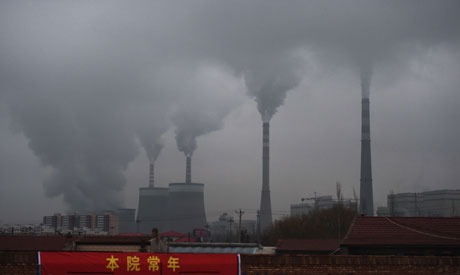
TO GO WITH China-economy-environment-coal-climate,FOCUS by Tom HANCOCK In this photo taken on November 19, 2015, smoke belches from a coal-fueled power station near Datong, in China's northern Shanxi province. For decades coal has been the backbone of the northern province of Shanxi, providing livelihoods for millions of miners, while private jet owning bosses became notorious for their nouveau riche lifestyles (AFP )
Pollution red alerts spread to more Chinese cities, state media reported Wednesday as Beijing entered its third day of heavy smog, with officials warning poor conditions could last until Saturday in some places.
Dingzhou and Xinji, two cities in Hebei province, which surrounds Beijing, followed the capital's lead to issue their first ever red alerts, the state-run China Daily reported, while 27 other cities across northern parts of the country also upgraded their public warning levels Tuesday, it said.
More than 300 million people in the region were affected by the toxic air, it added.
"According to forecasts, from December 8 to 12, the overall conditions for the atmospheric diffusion (of smog) are unfavourable," said the Beijing Environmental Protection Bureau on its official website earlier this week.
On Wednesday, Beijing continued to choke under levels of PM2.5 -- harmful microscopic particles that penetrate deep into the lungs -- above 250 micrograms per cubic metre, according to the US embassy, which issues independent readings.
The World Health Organization's recommended maximum exposure is 25.
The capital issued its first ever red alert for pollution on Monday -- the highest in the four-tiered, colour-coded warning system adopted nationally, but lacking in standardisation, with regulations differing from city to city.
It has grounded half of the city's private cars, ordered construction sites and certain factories shut, and recommended school closures, causing parents to scramble for childcare options.
Most of the country's greenhouse gas emissions come from the burning of coal for electricity and heating -- particularly bad when demand peaks in winter -- and is also the main cause of smog, which can include multiple pollutants.
The chronic haze blanketing northeastern China was so thick earlier this month that, unlike the Great Wall, it could be seen from outer space, according to satellite photographs from NASA.
Short link: